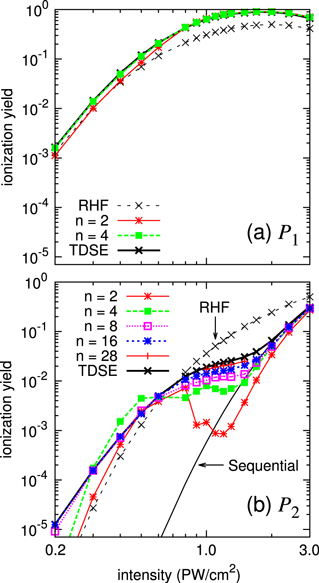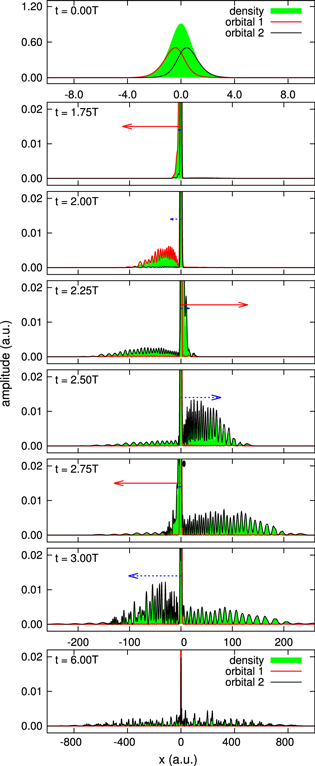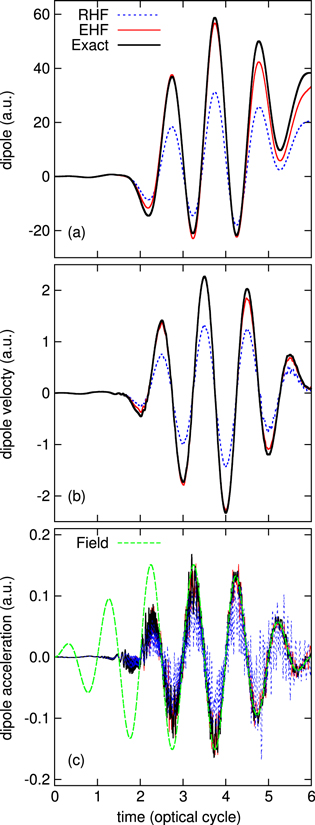The structure of approximate two electron wave function in intense laser driven ionization dynamics (2014)
要旨訳:
高強度場中の電離ダイナミクスを記述するための近似的な二電子波動関数の構造を、理論的および数値的に詳しく解析した。まず、二電子一重項系では拡張ハー トリー・フォック法【TD-EHF法:Phys. Rev. A 51, 3999 (1996)】と占有軌道数2の多配置時間依存ハートリー・フォック法が等価であることを理論的に示した。さらに後者の波動関数を自然展開し、自然軌道 (NO)に対する運動方程式を導出した。これらの方法および時間依存ハートリー・フォック法(TDHF)法を一次元ヘリウム原子モデルの電離ダイナミクス に適用して数値検証を行なった。この結果、(i)TDHF法ではトンネル電離を正しく記述できない理由を明らかにし、(ii)TD-EHF波動関数が物理 的解釈のための有効なツールとなること(従来の非直交基底およびNO基底の両方で)を示した。さらに、(iii)トンネル電離、高次高調波発生、非逐次二 重電離において電子相関(独立粒子描像を超える効果)が果たす異なる役割を明らかにした。最後に、NO基底アプローチの多電子系への応用の可能性を簡単に議論した。
Abstract:
The structure of approximate two-electron wavefunctions in strong-field-driven ionization dynamics is investigated in depth, both theoretically and numerically. Theoretical analyses clarify that for two-electron singlet systems, the previously proposed time-dependent extended Hartree–Fock (TD-EHF) method (1995 Phys. Rev. A 51 3999) is equivalent to the multiconfiguration time-dependent Hartree–Fock method with two occupied orbitals. The latter wavefunction is further transformed into the natural expansion form, enabling the direct propagation of the natural orbitals (NOs). These methods, as well as the conventional time-dependent Hartree–Fock (TDHF) method, are numerically assessed as regards providing a description of the ionization dynamics of a one-dimensional helium atom model. This numerical analysis (i) explains the reason behind the well-known failure of the TDHF method to describe tunneling ionization, (ii) demonstrates the interpretive power of the TD-EHF wavefunction in both the original nonorthogonal formulation and the NO-based formulation, and (iii) highlights different manifestations of the electron correlation (an effect beyond the single-determinant description), in tunneling ionization, high harmonic generation, and nonsequential double ionization. Possible extensions of the NO basis approach to multielectron systems are briefly discussed.
Source:
T. Sato and K.L. Ishikawa, The structure of approximate two electron wavefunction in intense laser driven ionization dynamics, J. Phys. B, 47, 204031 (12 pages) (2014) (http://dx.doi.org/10.1088/0953-4075/47/20/204031)



